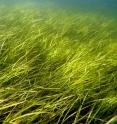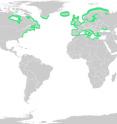Genome of the flowering plant that returned to the sea
An international consortium of 35 labs led by University of Groningen Professor of Marine Biology Jeanine Olsen published the genome of the seagrass Zostera marina in the scientific journal Nature on 27 January. Seagrasses are the only flowering plants to have returned to the sea, arguably the most extreme adaptation a terrestrial (or even freshwater) species can undergo. They provide a unique opportunity to study the adaptations involved. The Zostera marina genome is an exceptional resource that supports a wide range of research themes, from the adaptation of marine ecosystems under climate warming and its role in carbon burial to unravelling the mechanisms of salinity tolerance that may further inform the assisted breeding of crop plants. Seagrasses form the backbone of one of the most productive and biodiverse ecosystems on Earth, rivalling coral reefs and rainforests in terms of the ecosystem services they provide to humans. Seagrass meadows are part of the soft-sediment coastal ecosystems found in all continents, with the exception of Antarctica. They not only form a nursery for young fish and other organisms, but also protect the coastline from erosion and maintain water clarity. 'And they form a carbon dioxide sink: they store more carbon than tropical forests', says Jeanine Olsen.
Zostera marina, also called eelgrass, is the most widely distributed seagrass throughout the northern hemisphere, ranging from the warm waters of Southern Portugal to the frigid temperatures of Northern Norway. Eelgrass has also adapted to the salty conditions of full strength seawater. 'All this makes seagrass interesting for the study of the relationship between the complex gene networks affecting temperature tolerance, like climate warming, and the mechanisms of salt tolerance through osmoregulation', Olsen explains.
Genetic networks
The first step in studying genetic networks and the interaction of ecology and evolution in these plants was to produce and annotate a high-quality genome sequence. Olsen: 'For some researchers this may seem boring and have as much appeal as reading a telephone directory, but for us it has already revealed a host of unique adaptations.'
For example, eelgrass has not only lost its stomata (which are used by land plants to 'breathe') but also all of the genes involved in stomatal differentiation. 'The genes have just gone, so there's no way back to land for seagrass', says Olsen.
A unique adaptation is the cell wall, which is very different from normal plant cell walls and more like that of sea algae. Olsen, 'Although this has been known biochemically for many years, we now understand the underlying gene networks that produce sulphated polysaccharides.' Seagrasses have rearranged metabolic pathways to produce the sulphated polysaccharides, or, as Olsen explains: 'They have re-engineered themselves!'
Pathogens
The plant signalling and defence mechanisms are also different in eelgrass, with genes that produce volatile compounds in land plants having disappeared from the Zostera marina genome. Of course, there are no insects in the sea to pollinate the flowers or eat the leaves. Sex is entirely underwater involving long naked sperm filaments especially adapted for underwater fertilization of the tiny flowers. As for predators and pathogens, there are still plenty of small 'grazers' that scrape algae off the leaves, but little is known about seagrass pathogens. These are just a few of the adaptations to marine life described in the Nature paper.
This first analysis of the Zostera marina genome is just the beginning. 'Apart from the genome, we also have extensive transcriptome information from different plant tissues and under different experimental conditions, which shows us which genes are active.' An overarching question for Olsen's team is how quickly eelgrass can adapt to rapid climate change. The fact that Zostera marina grows along the coastline from Portugal to Scandinavia is being used as a natural experiment to investigate adaptation to warmer or colder water, as well as to salinity, ocean acidification and light. 'Are the different phenotypes hard-wired in the DNA sequence, by epigenetic changes of the DNA or by plastic responses in differential gene expression through the transcriptome?'
At the deeper level, scientists want to understand the reciprocal interactions between ecological and evolutionary processes. This is also the central theme of the Groningen Institute for Evolutionary Life Sciences (GELIFES), home of Olsen's research group.
A better understanding of eco-evolutionary interactions will help in the development of genomics-based, early-warning indicators that foreshadow seagrass ecosystem shifts and tipping points. This is urgent because seagrass meadows are threatened worldwide. Many initiatives have been launched to try and restore degraded meadows but with limited success. The detailed study of the adaptive capacity of seagrass may help conservation efforts. Olsen: 'And the Zostera marina genome is one of the few from a plant species that is neither a crop nor being developed for biofuel, so there is a lot to learn from it.'
Source: University of Groningen
Articles on the same topic
- Seagrass genome sequence lends insights to salt toleranceThu, 28 Jan 2016, 17:42:11 UTC
Other sources
- Seagrass genome sequence lends insights to salt tolerancefrom Science DailyThu, 28 Jan 2016, 17:22:21 UTC
- Seagrass Genome Sequence Lends Insights to Salt Tolerancefrom Newswise - ScinewsWed, 27 Jan 2016, 18:31:26 UTC
- Seagrass genome sequence lends insights to salt tolerancefrom PhysorgWed, 27 Jan 2016, 18:21:28 UTC

